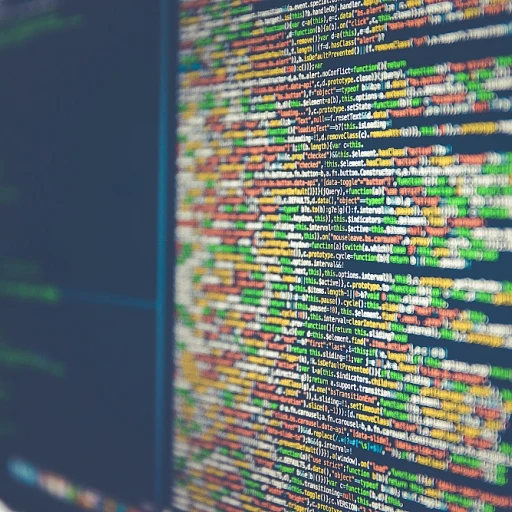
Riding the Wave of Development Trends
Navigating the Latest Software Development Trends
In the ever-evolving world of software technology, developers and tech enthusiasts alike find themselves on a perpetual quest to stay ahead of the curve. With emerging trends shifting the landscape, it is crucial to understand how these changes might affect everything from coding practices to software distribution. The rise of low-code development platforms is one of the standouts in today's software scene. These platforms provide a valuable solution for accelerating digital transformation efforts by allowing developers to create applications with minimal hand-coding. As pace and efficiency become core priorities, embracing this new wave of low-code testing could be a game-changer. Additionally, as software continues to progress, cloud-native architectures are becoming increasingly pivotal. These architectures, optimized for the cloud from the onset, offer flexibility and scalability that traditional infrastructures lack. Developers can now leverage these traits to rapidly deploy apps and services without the burden of extensive overhead. Simultaneously, there's a growing consciousness towards DevOps practices. Modern software projects necessitate rapid cycles with frequent updates, making the seamless collaboration between development and operations teams more vital than ever. The adoption of agile methodologies supports this shift, fostering a culture of continuous improvement and enhanced efficiency. In the realm of software development, these trends represent a collective movement towards innovation and adaptability, setting the stage for the next power players in technology like AI and Quantum Computing, which promise to reshape our digital experiences beyond recognition.The Power Players: AI and Machine Learning
Unleashing the Prowess of AI in Software
Artificial intelligence (AI) and machine learning are unequivocally shaping the future of software, marking their territory as the vanguard of the tech world. These technologies are not just trends; they are the backbone of transformative change across various sectors. From healthcare to finance, the adaptability and predictive prowess of AI bring unimaginable possibilities that redefine industry standards. Machine learning, in particular, is the game-changer enabling software to evolve through experiential learning, improving performance without explicit programming. Organizations leverage these powerful tools to enhance customer experiences, optimize operations, and craft personalized solutions that anticipate users' needs. Moreover, AI's integration with low-code platforms, such as the innovative Salesforce low-code platform, enables businesses to harness simplicity while driving innovation. This symbiotic relationship allows organizations to accelerate their digital transformation journey by creating agile solutions that are both complex and easy to manage. As we delve deeper into the synergy between these technologies, it becomes evident that AI and machine learning are not supplementary but integral to the advancements in software technology. They are the architects paving the way for the era of intelligent software solutions that hold the potential to revolutionize every aspect of how we interact with digital systems.Quantum Computing: The Next Frontier
A Quantum Leap in Computing
As we delve deeper into the realm of revolutionary software technologies, quantum computing presents itself as the next formidable frontier. Emerging from the enigmatic world of quantum mechanics, this transformative technology possesses the potential to solve complex problems that are currently beyond the reach of traditional computers. Quantum computing leverages the principles of superposition and entanglement, allowing it to perform computations at speeds that drastically outstrip classical systems. While still in the early stages of development, its implications for software technologies are immense. One area where quantum computing shows promise is optimization tasks. Imagine optimizing vast transportation networks or intricate supply chains in seconds rather than hours. The software industry can expect algorithms that make light work of these complexities, offering solutions that once seemed unimaginable. Moreover, the potential impact of quantum computing on artificial intelligence and machine learning is noteworthy. By enabling faster processing of large datasets, it could revolutionize the way algorithms learn and interact, accelerating the pace of AI developments. However, transitioning from theory to practical application is a challenging journey. Quantum computing requires an overhaul of existing software paradigms and necessitates the development of entirely new programming languages and tools. This nascent technology calls for pioneering mindset shifts among developers. In bridging the gap between potential and practicality, companies must also focus on integrating quantum computing with existing frameworks and infrastructure. It's a delicate balancing act of innovation and compatibility. With the rapid advancements in quantum processing power, the race is on for the first fully functional, commercially viable quantum computers. Meanwhile, the software technology landscape prepares itself for what could arguably be the most significant leap forward since the advent of digital computing. Setting the stage for quantum computing's future involves laying the groundwork for scalable algorithms and quantum networks that intertwine seamlessly with our current digital world. Whether it's through enhancing SEO optimization in your CMS or other practical applications, the ripple effect of quantum advances is only just beginning to be felt across the industry.The Internet of Things: Connecting the Dots
The Pervasiveness of IoT
The Internet of Things (IoT) is unveiling its potential on a global scale, creating a web of interconnected devices that promise to revolutionize industries and everyday life. As we survey the evolving software landscape, it is clear that IoT is playing a critical role in bridging the gap between the digital and physical worlds.
In tandem with technologies like AI and Machine Learning, discussed earlier, IoT is enabling smarter applications through real-time data collection and analysis. This synergy is not only making devices more responsive but also more anticipative of user needs, transforming everything from smart homes to advanced industrial networks.
Moreover, the integration of IoT is fostering enhanced decision-making and efficiency. Businesses are starting to leverage the data generated by IoT devices to streamline operations, optimize resource allocation, and improve customer experiences. This trend underlines IoT's position as a cornerstone in the ongoing digital transformation journey.
The potential of IoT extends beyond mere connectivity. Advances in edge computing and data processing are crucial in managing and analyzing the vast amount of data produced by these networks. As we look forward, the capability to harness ecosystems of interconnected devices will define competitive advantage across sectors.















